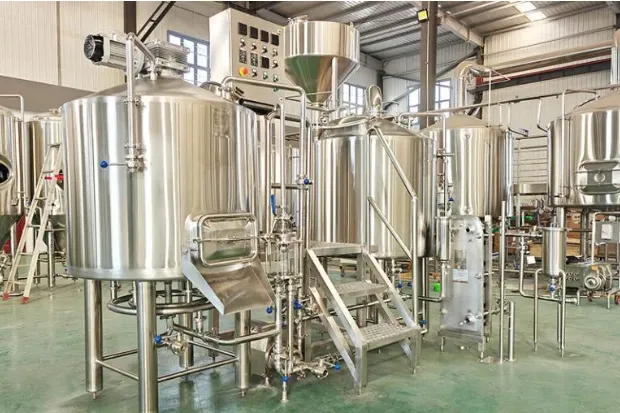Why is CS2 Stuttering Even with High FPS? Causes and Fixes Explained
Counter-Strike 2 has quickly become one of the most played competitive shooters in the world, but despite its popularity, players often complain about one frustrating issue: stuttering. What makes this problem even more confusing is that it happens even when your FPS counter looks healthy and high. You could be sitting at 200+ frames per second, yet the game feels like it’s skipping frames, freezing briefly, or giving inconsistent motion. This creates a mismatch between what the numbers show and how the game feels, which can ruin the smooth competitive experience players expect.
The Difference Between FPS and Smooth Gameplay
Frames per second (FPS) is often the first thing gamers check when performance feels off. However, FPS alone doesn’t guarantee smoothness. High FPS can still result in stuttering if frame pacing is irregular or if frames are not delivered consistently to the display. In CS2, where precision and timing are everything, even the smallest inconsistencies can feel exaggerated. That’s why players report stuttering even when the FPS counter is steady, making the experience frustrating and confusing.
How Frame Pacing Affects CS2
Frame pacing refers to the timing at which frames are sent to your monitor. If frames are being delivered unevenly, you might experience stutters despite a high frame rate. For example, you could get 240 FPS, but if some frames are delayed and others are sent too quickly, the smoothness of the game is lost. CS2 relies on stable frame pacing because the competitive nature of the game demands precise input response and clear visuals. Poor frame pacing is one of the main reasons stuttering happens, even with powerful PCs.
Network Factors and the Role of Ping
Stuttering isn’t always caused by your computer—it can also come from network-related issues. Lag spikes, unstable connections, and packet loss can all create moments where the game looks like it’s stuttering. Running a CS2 ping test helps you identify whether the issue is coming from your connection rather than your hardware. While your FPS might be perfectly fine, poor network conditions can make enemies appear jittery or cause delays between your input and in-game actions. That’s why understanding both performance and network health is crucial.
The Impact of Input Delay
Input delay can amplify the feeling of stuttering. Even if your FPS is high, small delays between your mouse movement and the in-game response can make it feel as if frames are skipping. This can happen due to high system latency, poor optimization, or even mismatched refresh rates between your GPU and monitor. Competitive CS2 players often invest in high refresh rate monitors to reduce input delay and create the smoothest possible experience. Still, if latency issues exist, stuttering may persist no matter how strong your PC is.
GPU Bottlenecks and Micro-Stutters
Sometimes the GPU isn’t the problem, but rather how it interacts with other parts of your system. If your CPU and GPU aren’t working in sync, micro-stutters can appear. These are tiny but noticeable hiccups in the flow of gameplay that don’t necessarily drop your FPS counter. In CS2, where micro-movements and reaction times matter, these bottlenecks can feel much worse than in casual games. A well-balanced system, with drivers updated and settings optimized, is necessary to avoid this type of stuttering.
Background Processes Affecting Performance
Even with strong hardware, background tasks can disrupt smooth gameplay. Apps like Discord, web browsers, or recording software can sometimes cause resource conflicts. CS2 is sensitive to CPU usage and memory allocation, so unnecessary processes can trigger small stutters that players mistake for FPS drops. Closing these background programs often helps reduce interruptions. High FPS numbers can still mean nothing if your system is juggling too many active processes at once.
The Importance of V-Sync and Frame Caps
Players often debate whether to use V-Sync or not. While V-Sync can prevent screen tearing, it sometimes introduces stuttering when frames aren’t synchronized perfectly. Similarly, running unlimited FPS can overwhelm your system, leading to instability in frame delivery. Setting a frame cap that aligns with your monitor’s refresh rate often results in smoother gameplay. Many CS2 players find that capping frames just above their monitor refresh rate creates a more stable and responsive experience than chasing maximum FPS numbers.
Refresh Rate and Monitor Issues
Your monitor’s refresh rate plays a huge role in how stuttering feels. If you’re running a 60Hz display with 200 FPS, you’re not actually seeing all those frames. This mismatch can create frame skipping and micro-stuttering. On the other hand, high refresh rate monitors (144Hz, 240Hz, or higher) are designed to handle more frames per second, creating a smoother experience. However, if your monitor settings aren’t configured correctly, stuttering can still occur even when the hardware is capable of much more.
Storage and System Performance
Stuttering isn’t always related to graphics and networking—it can also be tied to how fast your system reads and loads data. If you’re running CS2 on a slower hard drive instead of an SSD, texture loading can cause interruptions that feel like stutters. Even with high FPS, these momentary pauses create inconsistencies that break immersion. Moving the game to a faster SSD or ensuring your drive isn’t overloaded with background tasks can make a significant difference in eliminating stuttering.
Drivers and Software Optimization
Outdated or mismatched drivers often cause performance issues. Your GPU drivers, chipset drivers, and even Windows updates can affect how smoothly CS2 runs. Valve also regularly updates the game, which means that new patches can sometimes introduce bugs or conflicts. High FPS may mask some problems, but if your drivers aren’t optimized, stuttering will persist. Keeping your system up to date and fine-tuning settings can prevent these unnecessary interruptions.
Server-Side Issues in CS2
Not all stuttering comes from your side of the setup. Sometimes the problem is server-side. CS2 relies heavily on tick rates and server synchronization, and when servers are under heavy load, stuttering can occur regardless of your FPS or connection. Running a CS2 good ping test can confirm if your connection to the server is stable, but if the server itself is struggling, there’s not much a player can do. This is why stuttering often happens to multiple players in the same match at the same time.
Game Engine and Optimization Challenges
CS2 runs on Valve’s Source 2 engine, which offers significant visual improvements but also introduces new performance demands. Optimizing for every type of hardware setup is challenging, and as a result, players encounter stuttering even with high-end PCs. Some of these issues may be temporary as Valve continues to refine the engine, but currently, many players find themselves dealing with stuttering until patches smooth out the game’s performance.
Troubleshooting and Fixing Stutters
When faced with stuttering in CS2 despite high FPS, troubleshooting involves checking multiple layers of your setup. Start with a CS2 ping test to rule out network issues, then move on to adjusting in-game graphics settings, checking for driver updates, and ensuring background tasks are closed. Consider capping your FPS to match your monitor’s refresh rate and make sure your storage drive is fast enough to handle game data efficiently. By systematically working through each factor, you can minimize the chances of stuttering disrupting your matches.
Final Thoughts on CS2 Stuttering
Stuttering in CS2, even with high FPS, is a complex issue that comes from a mix of factors: frame pacing, network stability, input delay, system bottlenecks, and even server-side challenges. High FPS numbers look good on paper but don’t always translate to smooth gameplay. That’s why competitive players focus not just on frame rates but also on latency, consistency, and connection stability. Running a CS2 good ping test, keeping your system optimized, and understanding how each part of your setup contributes to performance will help create the smooth, stutter-free experience every CS2 player wants.






